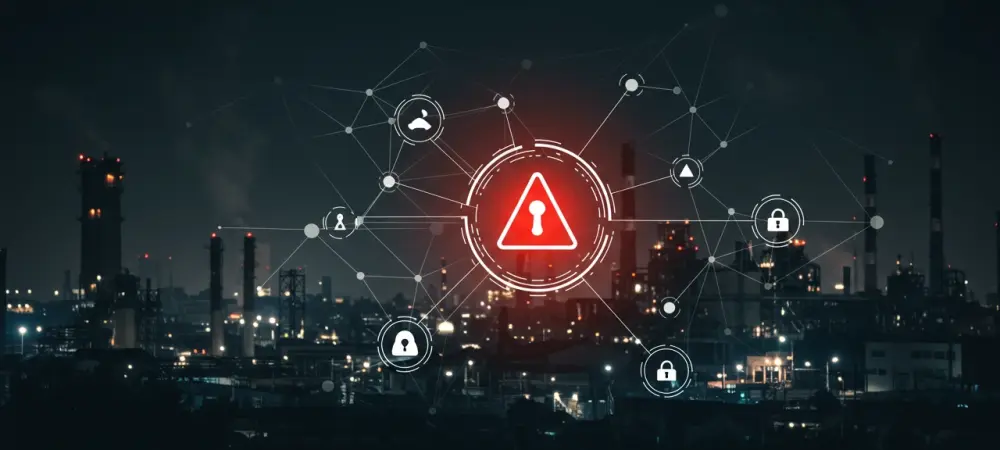The growing reliance on internet connectivity has ushered in a new era of threats to industrial control systems (ICS) worldwide. Cybersecurity assessments reveal that internet-based threats have emerged as the predominant danger to these critical infrastructures. The first quarterly threat landscape report of this year underscores the alarming frequency of internet-driven attacks, showing a staggering 21.9% of ICS computers globally experiencing blocked malicious activities. These figures highlight the ever-present cybersecurity challenges industries face as the digital and physical worlds continue to converge.
The Importance of Cybersecurity for Industrial Control Systems
Industrial control systems are pivotal yet vulnerable pillars of modern infrastructure, managing processes in energy, water, and manufacturing sectors. Cybersecurity’s role in safeguarding these systems has never been more vital, given the economic and societal ramifications of potential breaches. The intricacies of ICS environments often lag behind cutting-edge security developments, leaving them exposed to advanced internet threats. This research conveys the critical nature of addressing these vulnerabilities to ensure the continuity and safety of essential industrial operations on a global scale.
Cybersecurity in industrial control systems holds significant societal relevance, as attacks can lead to disruptions that cascade across entire communities and economies. While technological advancements have bolstered defenses, this research emphasizes the continuous evolution of cyber threats outpacing traditional security measures. By highlighting the urgent need for enhanced cybersecurity frameworks, this study serves as a call to action for stakeholders across industries to prioritize and invest in more comprehensive safeguards to protect these vital systems from internet-based threats.
Research Methodology, Findings, and Implications
Methodology
The research employed a comprehensive approach by collecting data from various global regions, analyzing incidences of ICS computer threats intercepted by cybersecurity tools. It focused on differentiating between various sources of attacks, with a notable emphasis on internet-sourced threats. The researchers utilized threat intelligence platforms to assess the frequency and nature of internet-based attacks, comparing regional disparities in cybersecurity preparedness through detailed threat analysis.
Findings
The findings paint a concerning picture, with internet threats consistently outnumbering other attack vectors like email and removable media across every monitored region. Africa reported the highest incidence rate of affected systems at 29.6%, followed closely by Southeast Asia. On the contrary, Northern Europe exhibited the lowest rates, highlighting stark contrasts in regional cybersecurity maturity. The study attributed the rise of these threats to several factors, including denylisted web resources and phishing pages leveraged by cybercriminals exploiting ICS vulnerabilities.
Implications
The implications of these findings are profound, urging industries and policymakers to reconsider current cybersecurity strategies. The persistence of internet threats signifies a need for stronger protocols surrounding internet access and network segmentation within ICS environments. The research suggests practical measures such as enhancing threat detection and response capabilities and advocating for policy changes to strengthen cybersecurity frameworks globally. Moreover, it underscores the societal impact of industrial cybersecurity, stressing the potential for severe disruptions should these systems be compromised.
Reflection and Future Directions
Reflection
Reflecting on the study, several challenges emerged during the research process. These included the difficulty in gathering real-time threat data across diverse regions and varying levels of technological development. Overcoming these obstacles required deploying advanced analytical tools and forging partnerships with local entities to access pertinent information. The study could have expanded to incorporate emerging technologies, such as artificial intelligence, as potential solutions for improving cybersecurity effectiveness in ICS.
Future Directions
Future research should delve deeper into the specific tactics used by cybercriminals to infiltrate ICS environments, as the present study only scratched the surface. Investigating the integration of emerging technologies that could bolster ICS defenses remains a promising avenue. Moreover, addressing regional disparities in cybersecurity maturity through targeted investments and knowledge exchange programs could significantly improve global preparedness against internet threats. The proposed areas for exploration aim to catalyze advancements in safeguarding these critical infrastructures against evolving cyber threats.
Conclusion
This study underscored the pressing reality that internet threats pose a significant risk to industrial control systems worldwide. The findings highlighted by the research urge industries to fortify their cybersecurity protocols and bridge regional disparities in preparedness. Moving forward, the study encourages further exploration into cutting-edge technologies and global collaborations to foster enhanced defenses. As the intersection of technology and industry deepens, so does the necessity for robust cybersecurity to shield the very systems underpinning modern society.

